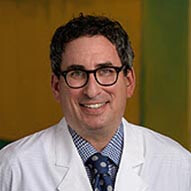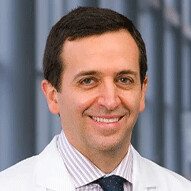Pediatric hemorrhagic stroke
A hemorrhagic stroke is bleeding in the brain that results from a burst blood vessel. Strokes are rare in children, but when they happen, immediate medical attention is critical.
Our dedicated pediatric team, at Children's Healthv℠, offers 24/7 specialized care for children experiencing a hemorrhagic stroke. We provide fast evaluations to identify if and why a stroke happened, and we work quickly to stop the bleeding. Our rapid, expert care reduces the risk of long-term problems to help your child live their fullest possible life.
What is a pediatric hemorrhagic stroke?
A hemorrhagic stroke happens when a blood vessel in the brain bursts and floods the area with blood. The bleeding creates pressure on nearby brain tissue.
A hemorrhagic stroke and the pressure it causes disrupt blood flow in that area of the brain. The lack of blood flow prevents the tissue from receiving enough oxygen, which can damage that area of your child’s brain.
Strokes can happen to children at any age, even before birth. Emergency treatment helps reduce the risk of long-term effects from a stroke. However, children may have a better chance at a full recovery than adults do.
What are the types and causes of a pediatric hemorrhagic stroke?
Hemorrhagic strokes in children have some different causes than strokes in adults. There are three main types of hemorrhagic stroke**.**
Intracerebral hemorrhagic stroke - With intracerebral hemorrhagic strokes, bleeding comes from blood vessels inside the child’s brain.
Causes of intracerebral hemorrhagic stroke include:
Arteriovenous malformations (AVMs) - Some children are born with tangles of blood vessels in which arteries and veins are directly connected. In these abnormal connections, excessive pressure builds, weakening the vessels, which can cause them to burst and bleed.
Cavernous malformations - These clusters of capillaries (tiny blood vessels) are enlarged and have thin walls that can leak or burst, causing a hemorrhagic stroke. Children can be born with cavernous malformations.
Hematologic disorders - These conditions affect the blood’s ability to clot, which means children are more likely to have bleeding in the brain. Surgery procedures and medications can cause hematological abnormalities, too.
Brain tumors - Certain types of brain cancer tumors can bleed, leading to hemorrhagic stroke.
Subarachnoid hemorrhagic stroke - Bleeding on the surface of the brain is called a subarachnoid hemorrhagic stroke. Blood flows under the arachnoid membrane, one of several that cover and protect the brain, filling the space between the brain and skull. A subarachnoid hemorrhagic stroke creates pressure on the brain and can cause damage.
Cause of subarachnoid hemorrhagic stroke include:
The most common cause of a subarachnoid hemorrhagic stroke is a brain aneurysm, a weak area in the wall of a blood vessel in the brain. An aneurysm bulges from the artery, and the thin wall can burst and cause bleeding. Children can be born with brain aneurysms, or they can result from a genetic disorder or head injury.
Subdural hemorrhagic stroke - A subdural hemorrhage, or hematoma, also happens on the surface of the brain but under another membrane, the dura mater. A severe head injury can cause these strokes (hemorrhages) in children.
What are the signs and symptoms of a pediatric hemorrhagic stroke?
If your child experiences any of these symptoms, call 911 immediately.
Severe headache
Bulging fontanelle (soft spot on top of a baby’s head)
Weakness or numbness on one side of the body
Confusion and extreme sleepiness
Severe dizziness and unsteadiness
Difficulty moving, crawling or walking
Seizures
Difficulty speaking or seeing
Loss of consciousness and difficulty waking
The signs and symptoms of a stroke depend on the cause and the area of the brain that’s affected. With hemorrhagic strokes, signs and symptoms usually develop gradually and worsen over time.
How is a pediatric hemorrhagic stroke diagnosed?
If your child has symptoms of a hemorrhagic stroke, our evaluation usually begins in the emergency room. Our pediatric stroke specialists do a rapid physical exam and ask you about any head injuries, infections or family history of bleeding problems.
The care team works quickly to find the cause of the stroke using imaging and other tests, which may include:
Blood tests - We take a small sample of your child’s blood to test for signs of infection or disorders that may cause bleeding.
Brain imaging - These tests will show details of your child’s brain and blood vessels inside it. Your child must lie still during the imaging studies, so we may provide medication to help them sleep.
Electroencephalography (EEG) - In this painless test, we attach electrodes to your child’s head to record the brain’s electrical activity. Your child might need an EEG if they’re having seizures.
Lumbar puncture - We use a needle to take a small sample of fluid from your child’s spine to test for signs of infection or other possible causes of the stroke.
MR angiogram - This type of MRI shows details of blood vessels, such as narrowing, blockages, tangles or other problems that may be causing the stroke.
How is a pediatric hemorrhagic stroke treated?
At Children’s Health, our team has extensive expertise in surgery and minimally invasive procedures to treat a hemorrhagic stroke. Our pediatric neurologists, neurosurgeons and interventional neuroradiologists (doctors who treat brain and spinal cord conditions with minimally invasive procedures) work quickly to stop the bleeding.
Treatment for your child depends on the cause and location of the stroke and other factors.
Our team offers:
Endovascular procedures - In these minimally invasive procedures, our neuroradiologists insert a catheter (thin tube with surgical instruments) into a blood vessel in your child’s groin. They guide the catheter through blood vessels to the area of the brain to repair the cause of the bleeding. Endovascular procedures can provide a safer procedure and faster recovery for your child because they avoid the need for an incision in the head.
Microsurgery - Using small incisions and openings in the skull, our neurosurgeons perform minimally invasive procedures to access the brain. We use high-powered microscopes to avoid critical areas and repair the cause of the stroke.
Open surgery - For some children, an open procedure may be the best approach to repair the cause of a hemorrhagic stroke. Our neurosurgeons make larger incisions and openings to access the area for treatment.
Rehabiliation services - Your child will need follow-up care if they have difficulty with movement, vision, speech or learning, depending on where the stroke occurred. At Children’s Health, we offer a wide range of rehabilitation services for children who have had a hemorrhagic stroke.
Pediatric hemorrhagic stroke doctors and providers
Our team includes pediatric neurologists, neurosurgeons and neuroradiologists who have advanced training and specialized experience in pediatric hemorrhagic stroke. We’re dedicated to rapid, expert care to diagnose and treat a stroke as quickly as possible to help your child achieve their best possible health.
 Brad Edward Weprin, MDPediatric Neurosurgeon
Brad Edward Weprin, MDPediatric Neurosurgeon Bruno Braga, MDPediatric Neurosurgeon
Bruno Braga, MDPediatric Neurosurgeon Rafael De Oliveira Sillero, MDNeurosurgeon
Rafael De Oliveira Sillero, MDNeurosurgeon Angela Price, MDPediatric Neurosurgeon
Angela Price, MDPediatric Neurosurgeon Dale Swift, MDPediatric Neurosurgeon
Dale Swift, MDPediatric Neurosurgeon Brett Whittemore, MDPediatric Neurosurgeon
Brett Whittemore, MDPediatric Neurosurgeon